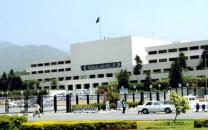Solar expansion pushes Rs200b cost onto grid-dependent consumers
Report warns 5% drop in grid demand could add Rs131b cost to consumers; 10% drop may double burden to Rs261b

A recent research report highlights that, for the fiscal year 2023-24, the increasing use of solar energy has placed an extraordinary 200-billion-rupee burden on consumers who rely on the grid.
As solar adoption grows, grid-dependent users have faced a Rs2 per unit increase in electricity rates, pointing to financial strain and inequality triggered by unregulated solar energy expansion through net metering.
The report warns that without swift government action, the financial burden on grid-dependent consumers will only increase.
Projections indicate that if solar usage reduces grid demand by 5% this fiscal year, grid-reliant consumers will face an additional Rs131 billion in costs. A 10% decrease in grid demand could double this figure to Rs261 billion.
To address the rapid and unregulated solar energy shift, the report calls for urgent reforms and policy changes to ensure fair electricity pricing and maintain grid stability.
Recommendations include shifting net metering to net billing or feed-in tariff (FIT) systems at lower rates, introducing fixed grid fees to reflect true costs, and establishing an ancillary services market to enhance grid stability.
Amending the distribution code to manage two-way power flow is also urged, aiming for equitable pricing and a balanced integration of renewable energy benefits with grid sustainability.
The report notes that rooftop solar installations have significantly impacted energy demand in Pakistan. According to estimates, consumers with a 10-kilowatt net metering system can save up to Rs20 per unit on grid expenses, while behind-the-meter installations help users save around Rs7 per unit in fixed costs.
Although solar users see substantial savings, decreased demand for grid electricity during the day has led to an 8-10% drop in sales, shifting the burden of grid maintenance costs onto consumers without solar power.
The study also identifies technical challenges facing distribution companies, such as voltage instability, reverse power flow, and increased demand for services like frequency regulation and reactive power support. Addressing these issues requires infrastructure investment, adding further financial strain to the energy sector.
The report forecasts a challenging future for Pakistan’s grid, with rapid demand declines at midday due to solar peaks, contrasted by surging evening demand, complicating grid management and operational planning.
Without immediate reforms, the report cautions, distribution companies face "severe losses" due to rising tariffs, reduced grid revenue, and an accelerating shift towards solar energy. This cycle, if unaddressed, threatens the long-term sustainability of the energy sector.
























COMMENTS (2)
Comments are moderated and generally will be posted if they are on-topic and not abusive.
For more information, please see our Comments FAQ